INTRODUCTION

Although PCIe and mSATA solid state drives are perhaps the two hottest "things" currently in the internal storage market that's not really enough to make them the most popular choice especially with the price tag free-fall of normal SATA III models. We just need to take a look at how things were just 2 years ago so while back then SSD prices were set at around USD1.5/GB today that has dropped to around USD0.9/GB which means that we've pretty much witnessed roughly a 40% reduction in price inside 2 years. Samsung may not have been amongst the very first manufacturers to jump in the consumer SSD wagon but they were the very first to offer high performance models for less compared to their immediate competition (largely thanks to the fact that Samsung SSDs use their own controllers and NAND Flash) and that's why their SSDs have taken such a large piece of the market. Last July Samsung launched the 840 EVO SSD Series and although it did take a while for us to secure a sample today on our test bench we have the 250GB model.
Samsung's Memory Business offers the industry's most advanced and extensive range of memory semiconductor products. As a leader in both the design and manufacture of memory semiconductor since 1993, the business provides key memory products including dynamic random access memory (DRAM), static random access memory (SRAM), NAND flash memory, Solid State Drives (SSD) and a range of green memory solutions for use in PC, server and mobile applications. Samsung is also leading the industry in advancements of next generation DRAM and NAND flash technologies while nurturing future memory technologies.
The goal of the 840 EVO Series is to replace the very successful 840 models by offering improved performance (up to 3 times) thanks to their very own 19nm 128Gb TLC (Triple-Level-Cell) NAND, proprietary firmware and brand new triple-core MEX controller (SATA 3.1 Cortex R4 design/400MHz each core). In the new 840 EVO SSD Series Samsung has also implemented two very unique features that also help a lot with the drives performance levels. The first is named TurboWrite and what it does is that it essentially creates a buffer area that simulates high-performance SLC NAND flash (3GB for the 250GB model) so whenever you use the drive the data you write end up there first and then are transferred to the normal portion of the drive. The small downside with this technology is that 3GB (up to 12GB for the 1TB model) may not be enough for some uses and so when the buffer gets filled the end user will experience normal MLC NAND flash speeds. The other feature is called RAPID Mode and although it's not the first time we've seen something similar it's actually far more "unique" since it basically makes use of your system DRAM (1GB) as cache for hot-data (frequently accessed) in order to accelerate read/write speeds. Just like Crucial’s M500 the 840 EVO also features hardware AES-256 encryption and TCG Opal so it's fully compatible with Microsoft's eDrive feature found in Windows 8. On paper the new 840 EVO Series look quite impressive especially for a mainstream line so let's see how the 250GB model does against the competition.
SPECIFICATIONS AND FEATURES


PACKAGING AND CONTENTS
As expected from Samsung the 840 EVO gets shipped inside a small black box with just a product picture at the front and the capacity of the drive inside.
The specifications list along with the contents of the box, serial number, barcode and the 3 years warranty are placed at the rear.
The box contains the 840 EVO SSD, software CD, installation instructions, warranty information paper and two case stickers.
THE 840 EVO 250GB
The 7mm thick aluminum housing of the 840 EVO has a dark grey color and at the top it only has the company logo along with an arrow pointing at the rear.
A large sticker at the rear contains information such as the drive capacity, part number, serial number, barcodes, electrical requirements and several certification and warning icons. To access the interior you will need to remove the two torx T5 screws placed beneath the sticker and the third right next to it.
At the rear we only see the SATA power and data connectors so firmware update should be software only.
Once you remove the cover you will see that the PCB is actually less than half of the interior and on the upper side it only has a single 128GB NAND package.
On the other side we see the 2nd 128GB NAND package, 512MB LPDDR2-1066 DRAM and the controller.
SAMSUNG MAGICIAN
We strongly recommend heading over to the official Samsung support page to download both the latest Magician and Data Migration software versions.
You can also download the latest FW version but that will not be necessary since the Magician automatically detects and installs the latest available one.
The Magician software takes into certainty that the drive is used for the OS so if it detects that you have manually set the page file it will warn you that the OS is not configured properly for SSD use.
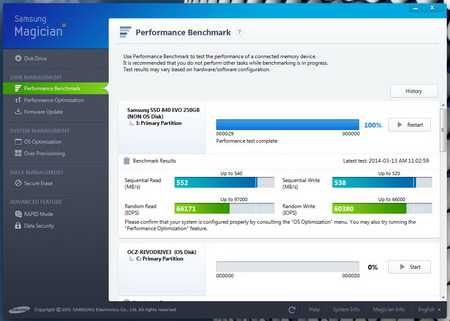
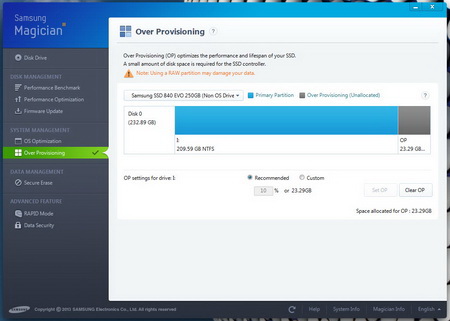
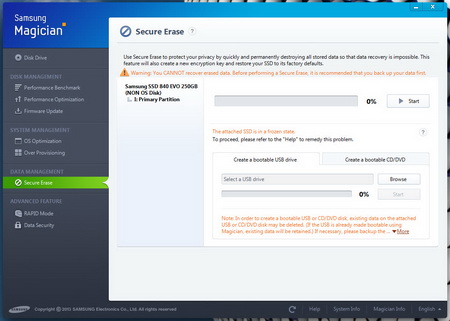
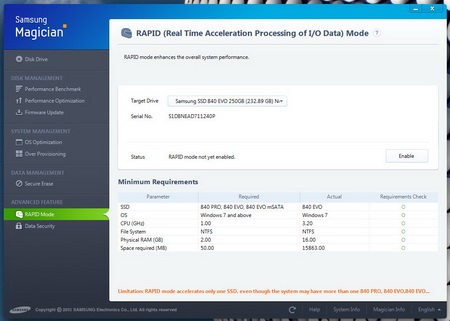
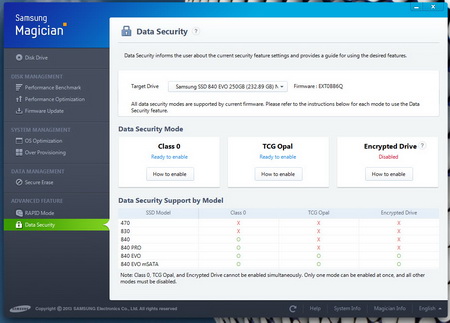
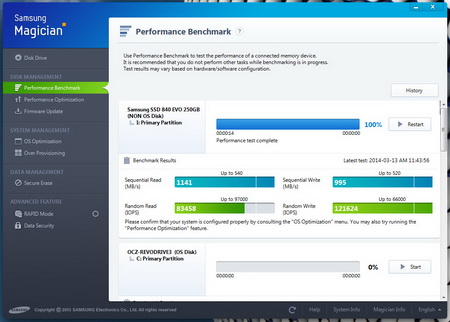
That being said the layout is very easy to understand so although from the disk drive tab you can check everything about the state of the drive in a glance there are several other pages like the Performance Benchmark page which allows you to quickly run tests on the drive (although we surpassed the read/write MB/s speeds for some reason the drive fell short on the IOPS), OS optimization page for systems that don't support TRIM, Over Provisioning page which allows you to set the available space for that feature (perhaps the first thing you should do), Secure erase screen (self-explanatory), RAPID mode tab from where you can enable/disable it and finally the Data Security page from where you can check the various security modes including TCG Opal.
TEST BED
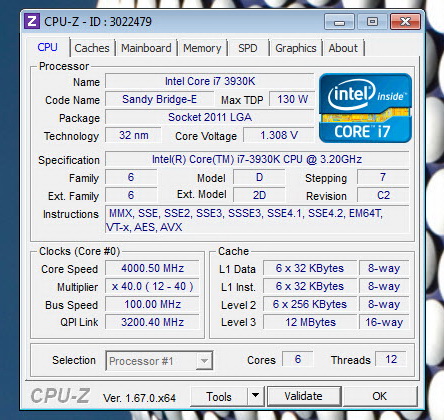

TESTING METHODOLOGY
After roughly 5 years of testing sold state drives i have concluded that it's almost impossible for any single benchmark suite to accurately measure their performance and that's why in certain benchmark suites we see amazing read/write performance numbers with some drives while in others things are quite different. The reason behind this is that some benchmarking suites are configured to read and write random chunks of data while others read and write constant (sequential) ones. So that's why i always use a very wide selection of benchmarking suites including AIDA64, HD Tach RW, HD Tune Pro, Crystal Disk Mark, Sisoftware Sandra Pro, AS SSD, IOmeter and ATTO. To get the most accurate results each test gets repeated a total of 6 times with the average performance numbers recorded into our charts.
Many people made inquiries about the charts ever since the last comparison so once again please do keep in mind that the Charts have the average performance numbers of each drive recorded and not the peak (highest) ones. Also although every single one of these programs can help potential buyers choose the right drive for their needs you should also remember that from any kind of benchmark up to real world usage the gap is not small (and usually most differences will go unnoticed by most people). All tests were performed in a fresh Windows 7 Ultimate x64 installation with every update installed up to March 10th 2014.
For this test (and upcoming Samsung SSD Reviews that may feature RAPID Mode) we used different charts to showcase the performance impact RAPID Mode has since we feel that it’s a feature that not everyone will use. We will also use PCMARK 7 to see whether or not this performance increase is constant and can indeed offer real world benefits.
TEST RESULTS - AIDA64 / ATTO
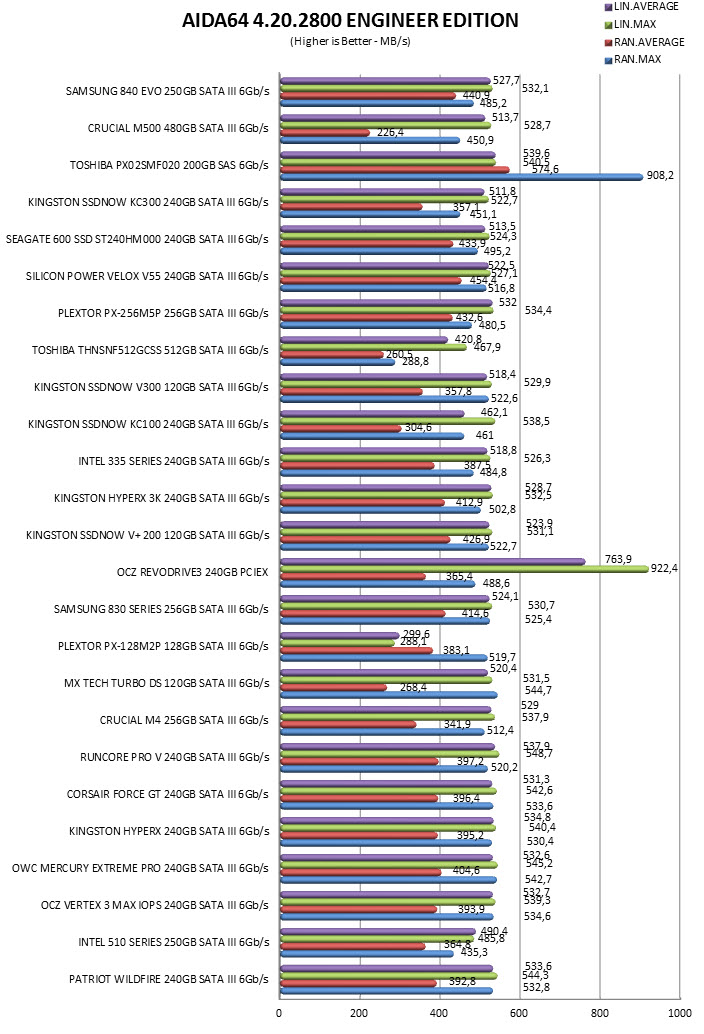
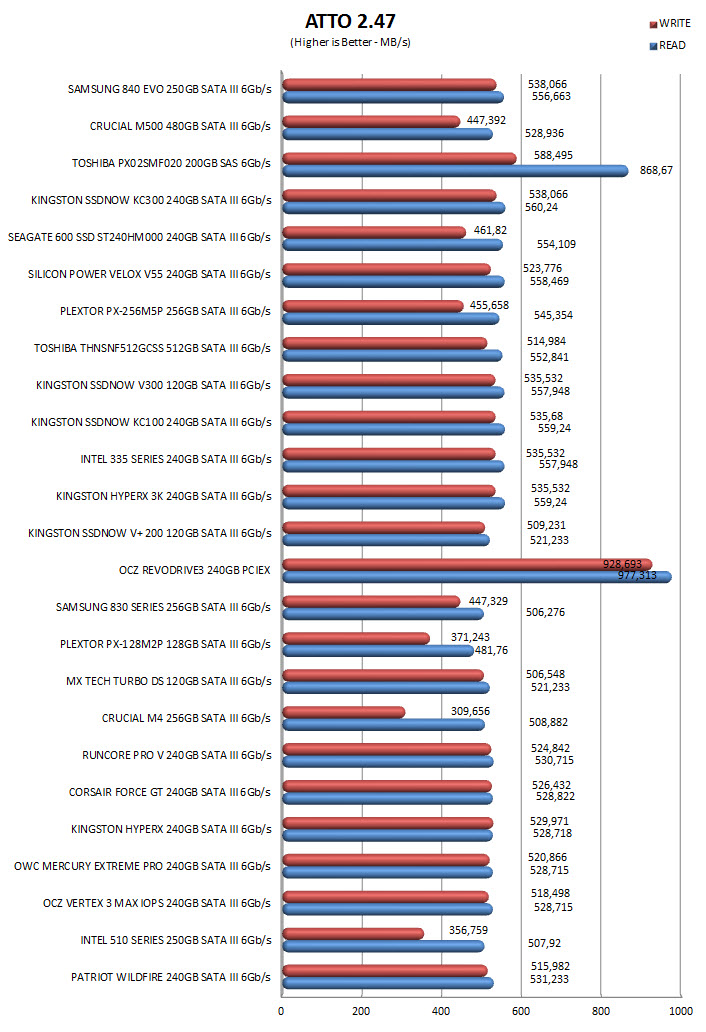
TEST RESULTS - HD TUNE PRO / HD TACH RW


TEST RESULTS - SISOFTWARE SANDRA PRO / CRYSTAL DISK MARK
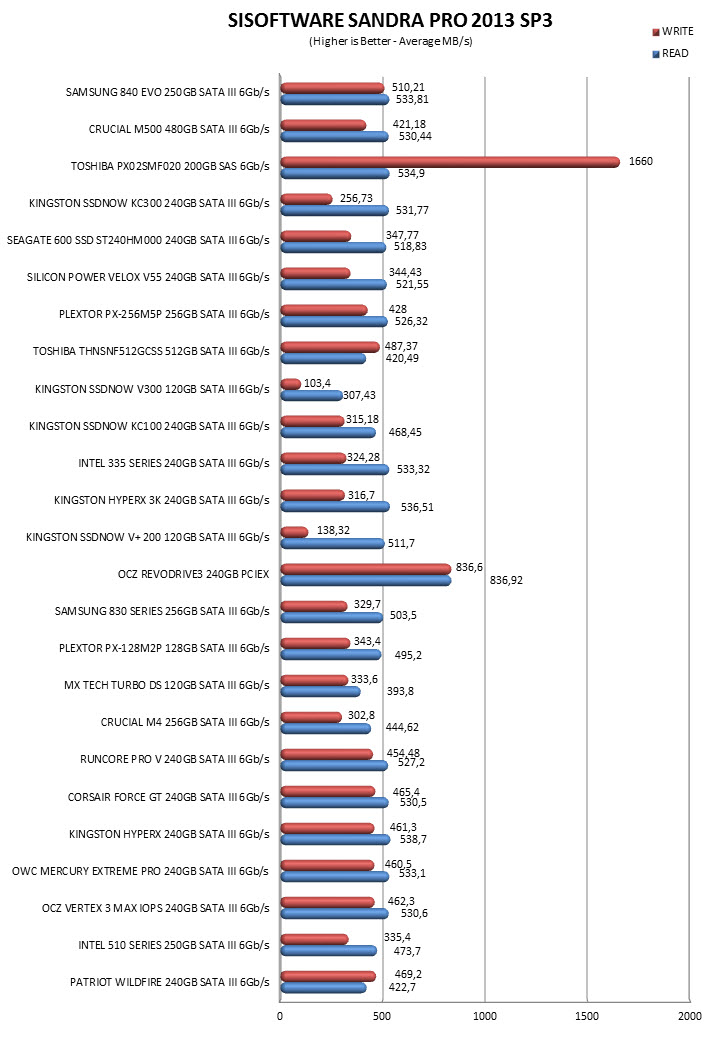

TEST RESULTS - AS SSD / IOMETER
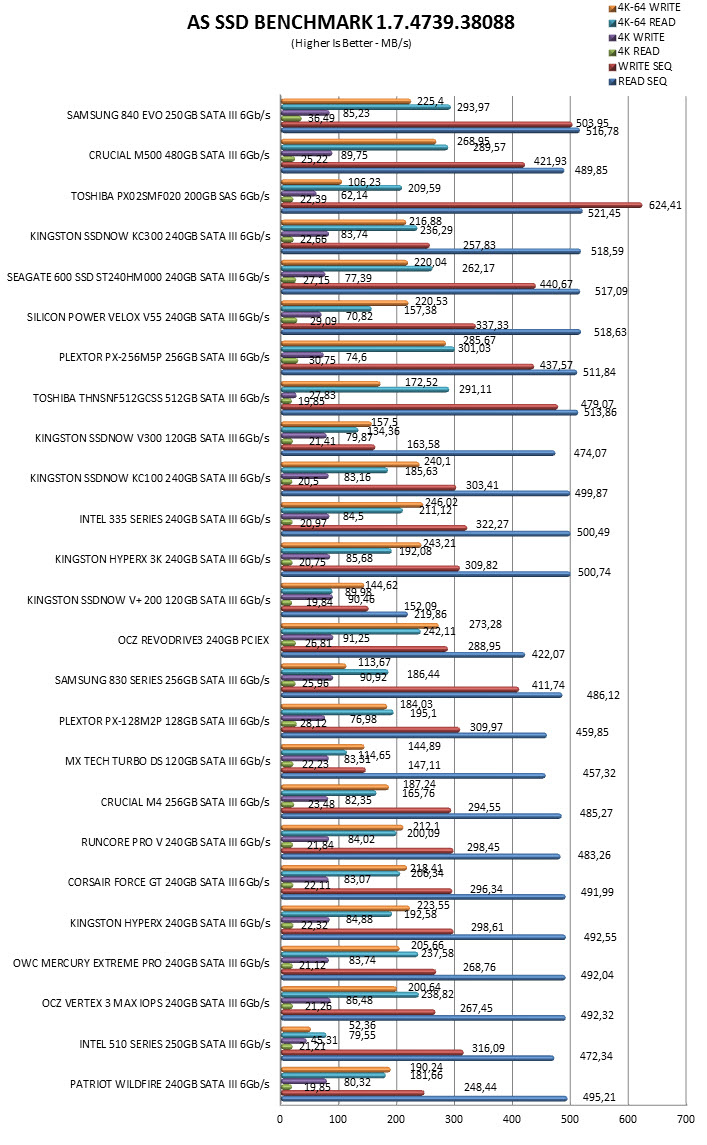
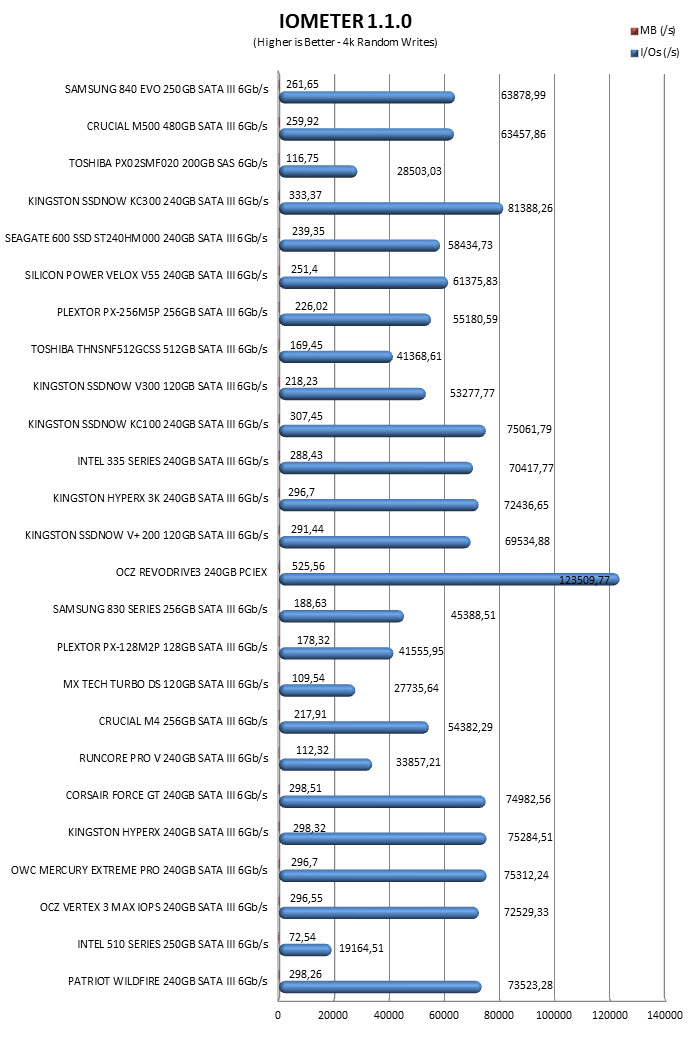
TEST RESULTS – RAPID MODE
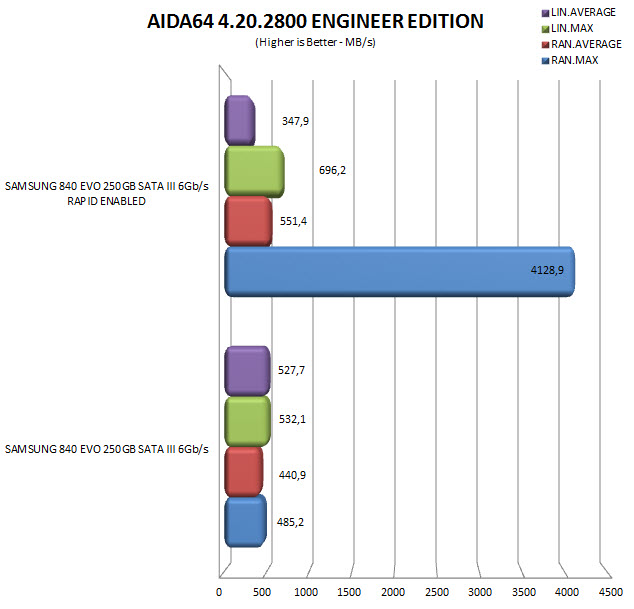
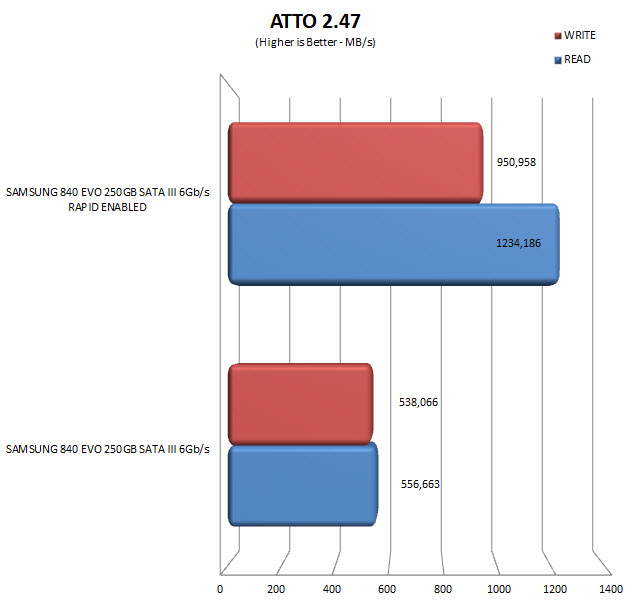
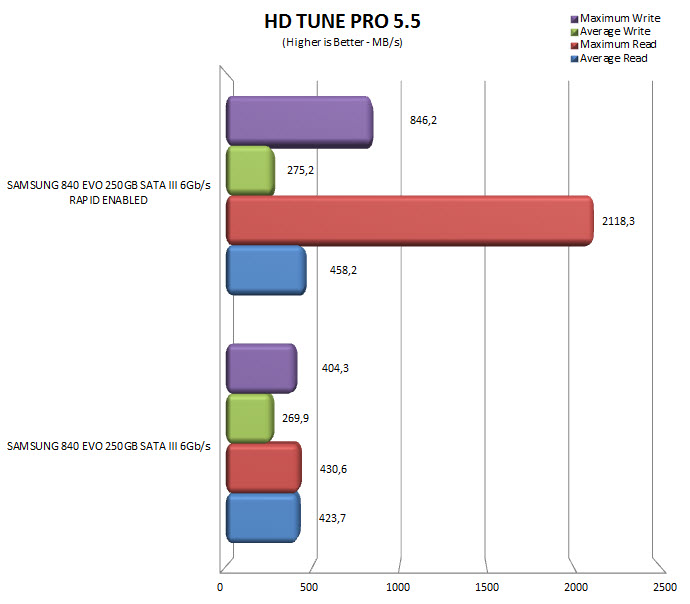
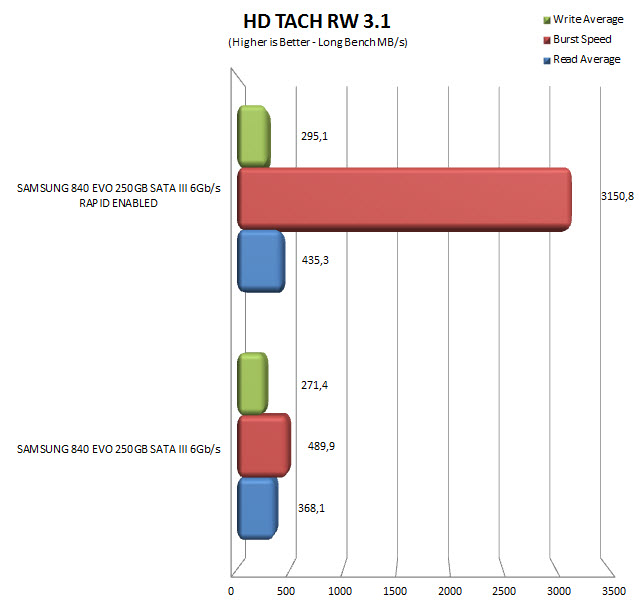
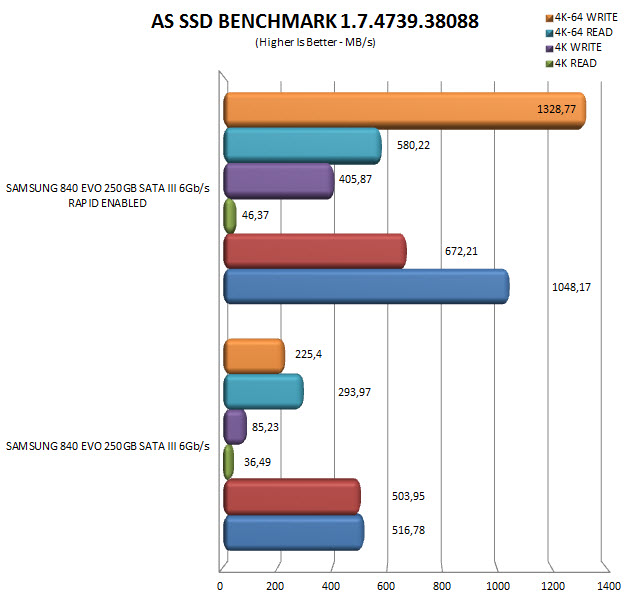
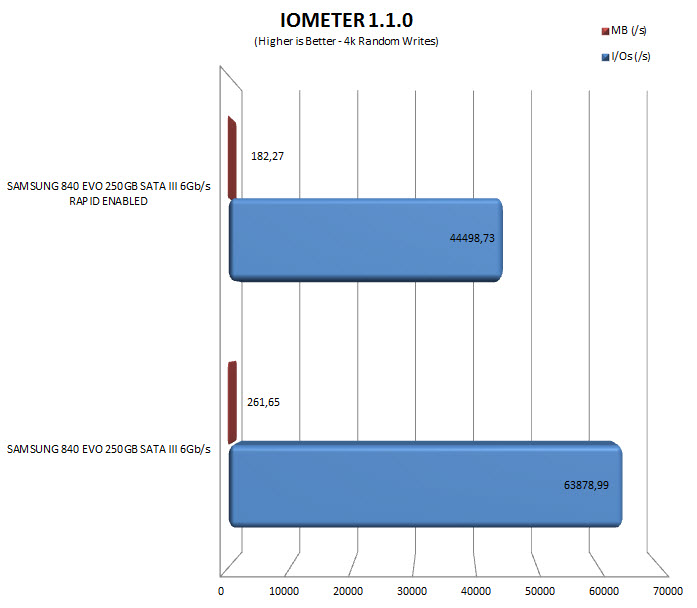
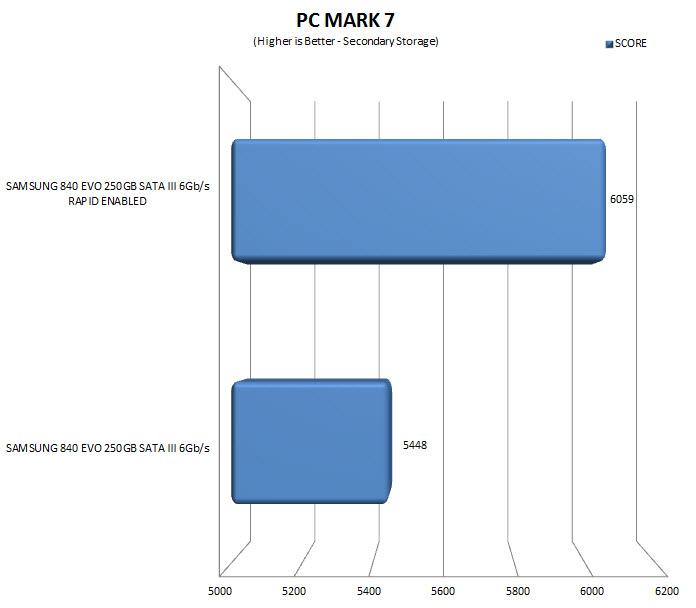
CONCLUSION
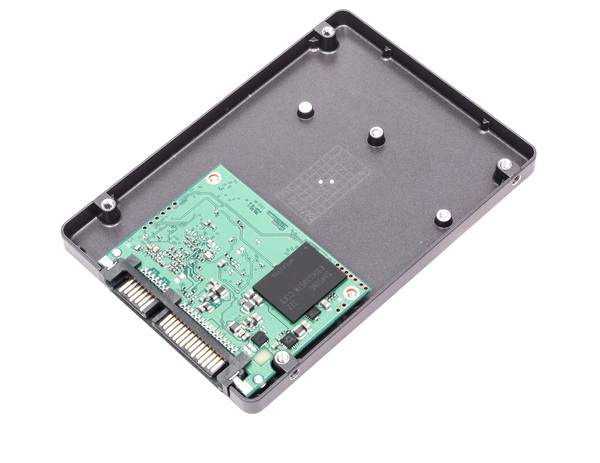
Although we haven't had the chance of testing the 840 thus we can't really compare it with the 840 EVO we were very impressed with it for a variety of reasons. First and foremost its read/write speeds were quite impressive for a mainstream SSD model and that's without even taking into account the very unique RAPID Mode offered by Samsung. RAPID Mode does indeed improve the performance of the drive and brings it on par with that of PCIe models but on one hand the 1GB system DRAM used doesn't seem to be large enough to offer constant speeds (easy to see that in our RAPID Mode results) while on the other during our benchmarks with it enabled we did encounter system "hiccups" (we used it in two of our test rigs just to be certain) so it may not be 100% perfect at least not yet. Another thing we liked is of course the Samsung Magician software which has come a long way both in terms of user friendliness and features since the one we had the change to use with the 830 Series at launch. The one thing we found weird was the IOPS performance of the drive since it didn't even manage to reach its reported numbers (not even in the Magician software). However it still did better than the m500 we reviewed a while back so it's not like we can really complain.
SSD prices have taken a remarkable dive over the course of the last 2 years but with the 840 EVO Samsung is following an even more aggressive policy since it currently retails for USD139.99 inside the USA (Amazon.com) and 120Euros inside the EU (Amazon.co.uk). This price tag not only places the 840 EVO amongst the cheapest 240/250/256GB SSD models in the market (such as the m500 240GB) but it also means that you end up paying just USD0.56/GB and with such performance levels not to mention the available features and 3 years warranty that's really impressive. In conclusion the 840 EVO 250GB SSD may not be the king of the hill but it offers a tempting package (performance/features/capacity/warranty/price) which is worth our Platinum Award.
 PROS
PROS
- Build Quality
- Excellent Overall Performance
- Features (TurboWrite/RAPID Mode/eDrive Support)
- Samsung Magician Software
- 3 Year Warranty
- Available In 1TB
- Price (For Some)
CONS
- TLC NAND Durability (Not for Industrial/Enterprise Use)

 O-Sense
O-Sense





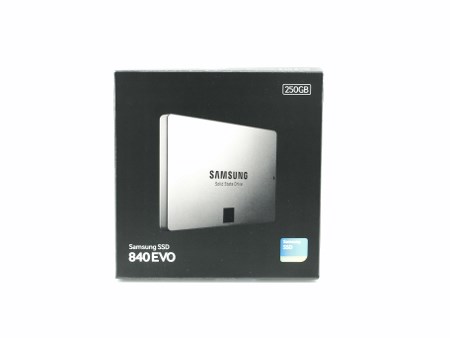
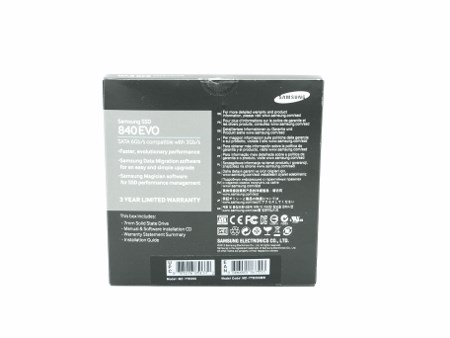
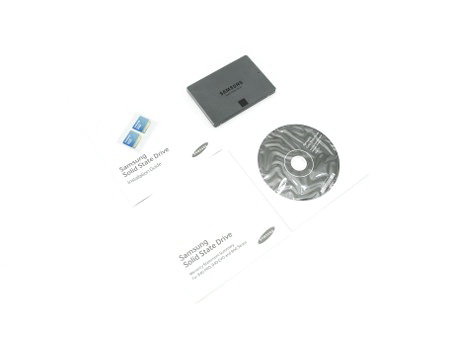
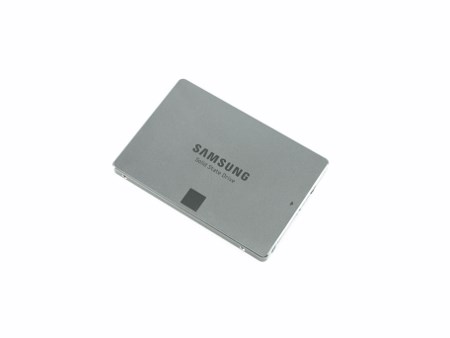
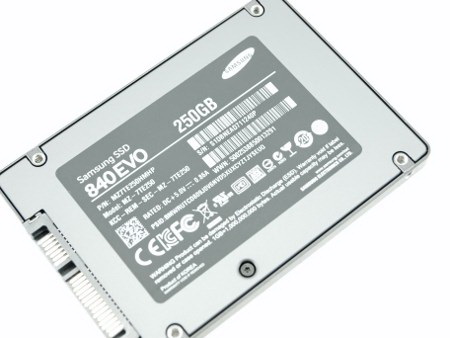

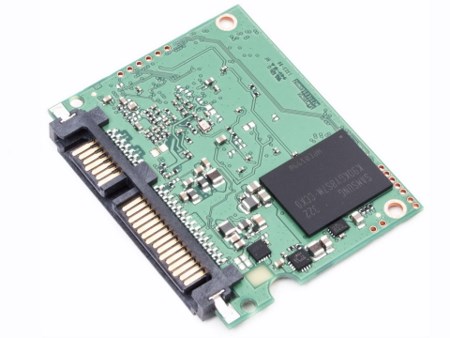
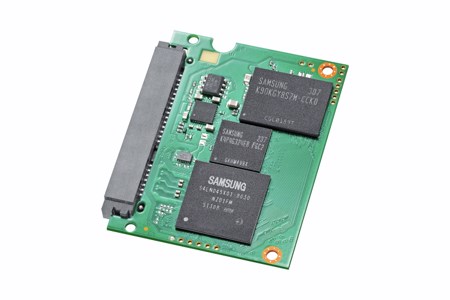
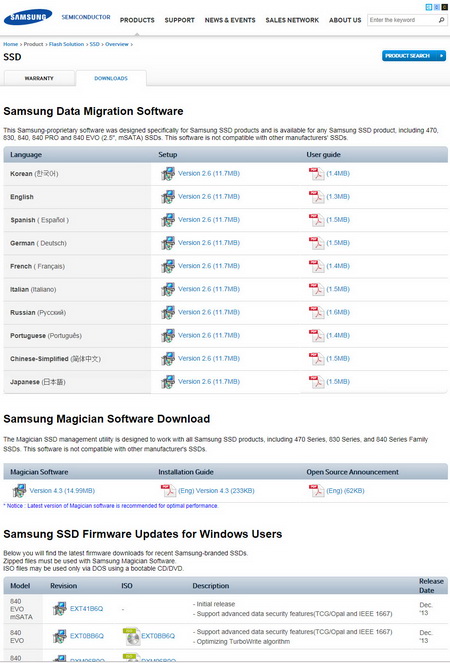
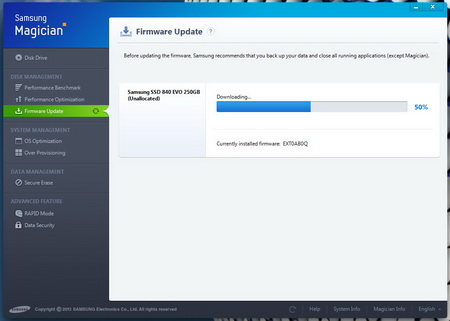
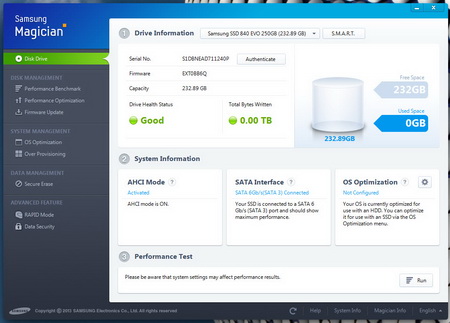


.png)

